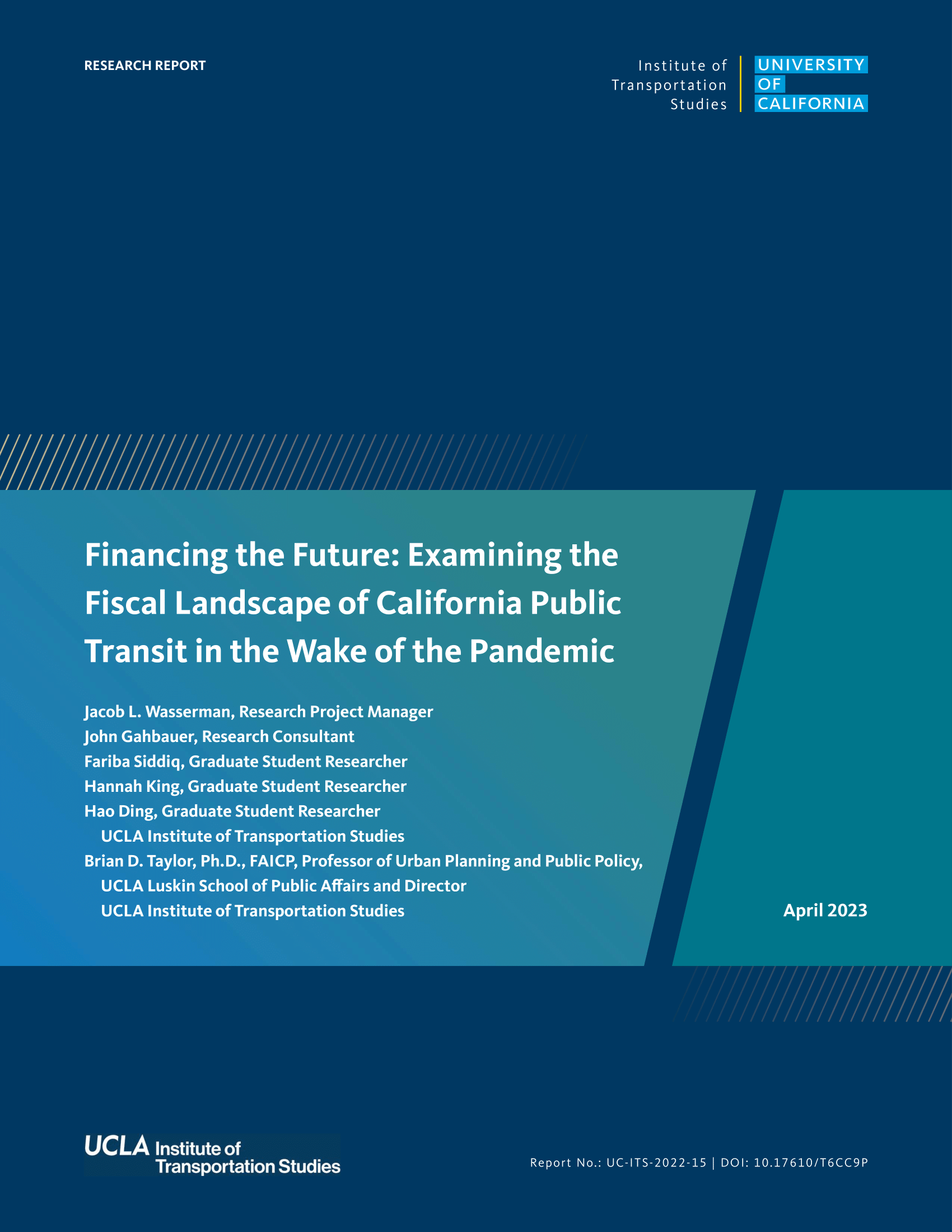Date: April 10, 2023
Author(s): Jacob L. Wasserman, John Gahbauer, Fariba Siddiq, Hannah King, Hao Ding, Brian D. Taylor
Abstract
California and its regional and local governments have invested heavily in public transit over the past half-century to provide an alternative to driving, ease traffic congestion, reduce emissions, slow climate change, steer new development, and provide mobility for those without. As a result, bus service has improved and expanded, and many parts of the state’s metropolitan areas are now served by rail transit.
Yet today, many of the state’s transit systems are struggling operationally and financially. Ridership began eroding in the half-decade leading up to 2020 and plummeted at the start of the COVID-19 pandemic. Three federal pandemic relief bills provided a critical lifeline to keep struggling transit systems afloat early on, but these funds are running out. Meanwhile, operating costs have risen, ridership and fare revenues have only partially returned, and some transit systems face “fiscal cliffs,” where they will need substantial new infusions of funding, substantial cuts in costs and service, or some combination of the two.
Against this backdrop, this report examines the current state of California transit finance: why ridership and fare revenues are down and their prospects for recovery; what lessons the successful federal relief bills provide; why commuter-oriented systems are struggling financially much more than those that primarily service transit-reliant riders; and what the financial managers at transit systems have done to cope with this turbulent time and how they see their future financial prospects.
About the Project
This project reports on the recent past, present, and immediate future of public transit finance in California and Southern California in light of the impacts of the COVID-19 pandemic. Initially, the financial situation of transit operators in the state and the region appeared dire, with plummeting ridership and fares and rising subsidies and operating costs. However, the three enormous federal pandemic relief bills brought billions of dollars to California transit agencies and helped them weather the fiscal storm, until many of the state and local tax revenue sources on which the state’s transit agencies rely bounced back and more quickly than most forecasters initially predicted. Yet in 2023, many of the state’s transit systems are struggling operationally and financially. Ridership began eroding in the half-decade leading up to 2020. While the federal pandemic relief bills provided a critical lifeline to keep struggling transit systems afloat early on, these funds are running out. Meanwhile, operating costs have risen, ridership and fare revenues have only partially returned, and some transit systems face “fiscal cliffs,” where they will need substantial new infusions of funding, substantial cuts in costs and service, or some combination of the two. Against this backdrop, this project examines the current state of California transit finance: why ridership and fare revenues are down and their prospects for recovery; what lessons the successful federal relief bills provide; why commuter-oriented systems are struggling financially much more than those that primarily service transit-reliant riders; and what the financial managers at transit systems have done to cope with this turbulent time and how they see their future financial prospects.


